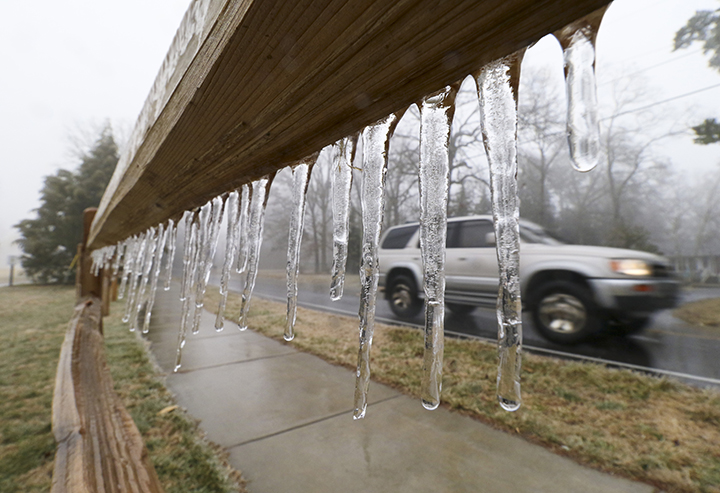
Associated Press
By Adam Beam
Associated Press
FRANKFORT, Ky. — It’s the South’s turn to suffer from the snow, freezing rain and sleet in a storm that brought back memories of one from the same time a year ago.
After weeks of snow in the Northeast, winter weather had moved through Arkansas and Kentucky and was headed east. While even small amounts of frozen precipitation can bring the region to halt, the worst was yet to come: temperatures in the single digits in areas where electricity was threatened by coatings of ice on power lines.
This February storm arrived on Presidents Day, when many schools and businesses were already closed. But the day isn’t a state holiday in North Carolina so schools let out early Monday and by the afternoon officials were canceling classes Tuesday. College campuses, including from Appalachian State University in the western part of the state and University of North Carolina at Chapel Hill, canceled afternoon classes Monday.
In central Kentucky, home to much of the state’s signature thoroughbred industry, horses kept warm by galloping through the deep snow, pausing occasionally to shake it off from their thick winter coats. Ned Toffey, general manager of Spendthrift Farm in Lexington, said the horses enjoy running in the snow because it gives them a nice cushion as opposed to the harder, packed earth.
Still, some weren’t quite ready for the winter blast.
RL Doss said he had already used his 1987 GMC Suburban — which can haul up to three-quarters of a ton with ropes and chains — to rescue several people and their cars on the hills surrounding Frankfort. Cars were fishtailing and sliding off the slick roads.
“I look at it this way. Everybody is trying to get out, to get their last bit of food and stuff, getting home from work and people leaving for work and stuff, and it happens,” he said, shivering in a pair of tan overalls pulled over a hooded sweat shirt.
Roads were brined and parking lots salted as officials tried to avoid a disastrous repeat of last year’s February storm, when rush-hour traffic and a thin coating ice combined to leave people either stuck in their cars or their cars abandoned in roads as they walked home in Atlanta and Raleigh, North Carolina. That storm dumped as much as 22 inches of snow in the North Carolina mountains and pelted the eastern part of the state with ice, much as was expected with the 2015 version.
North Carolina Gov. Pat McCrory on Monday shut down all non-mandatory state government operations in Wake County in the early afternoon before any precipitation had fallen. He also declared a state of emergency and issued executive orders designed to streamline any storm cleanup. He encouraged supervisors elsewhere in the state to use their discretion in sending employees home.
“Let’s hope that we’re over-prepared and underwhelmed by this storm,” McCrory said Monday.
On Monday night, he said the forecast had worsened with more snow and ice expected in the central part of the state. The National Weather Service said the storm could be crippling.
States such as Mississippi, Kentucky, Tennessee, North Carolina, South Carolina and Virginia were unlikely to get much sympathy from states in the Northeast, which has been slammed by seemingly endless snow. New York City came close to breaking a 127-year-old record when the temperature in Central Park hit 3 degrees, just 2 degrees above the record set in 1888, said Jeffrey Tongue, a National Weather Service meteorologist.






